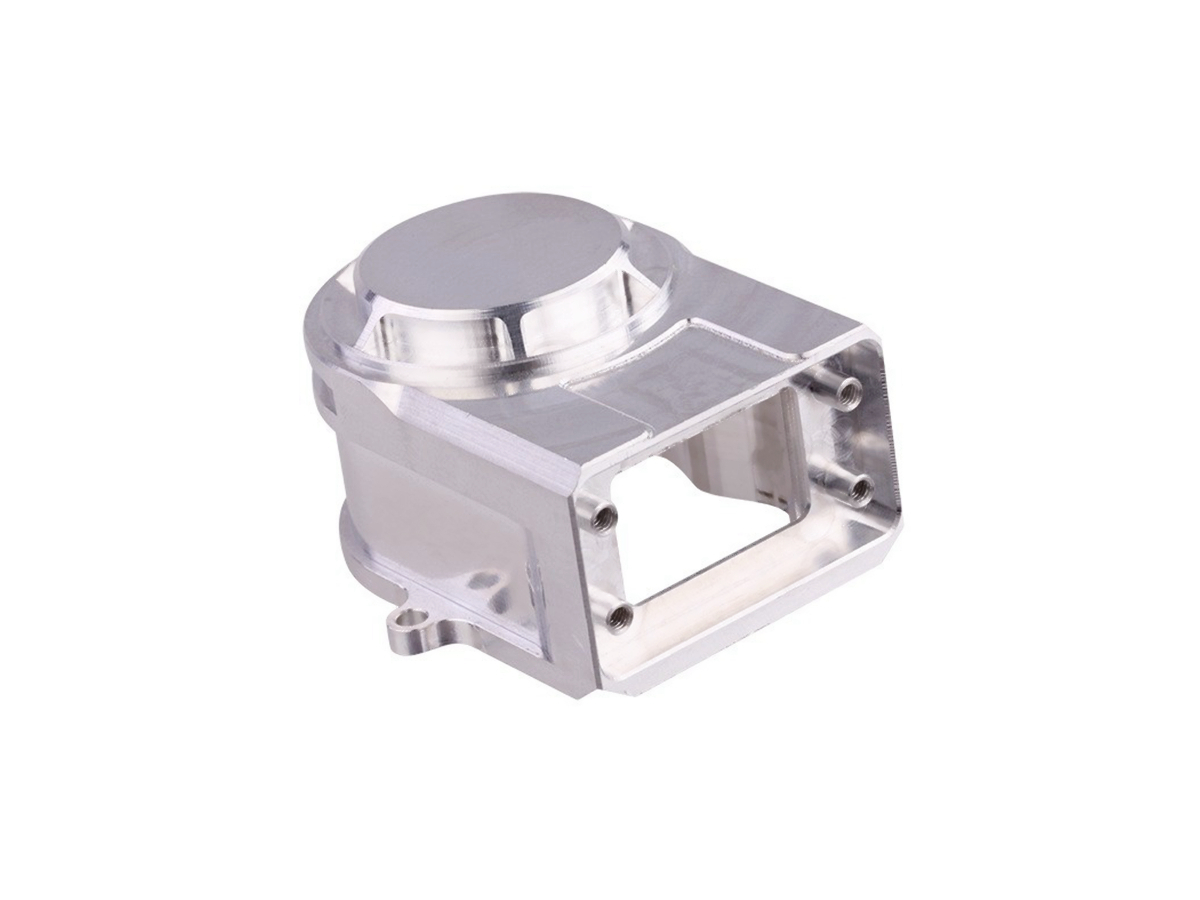Tailored Low-Volume CNC Machining of SUS630 (17-4PH) for Aerospace Applications
Introduction to Low-Volume CNC Machined SUS630 (17-4PH) Stainless Steel for Aerospace Components
The aerospace and aviation industry demands materials that combine exceptional strength, corrosion resistance, and reliable mechanical performance, even under extreme conditions. SUS630 (17-4PH), a precipitation-hardening stainless steel, is specifically designed to meet these stringent aerospace requirements, offering high tensile strength (up to 1310 MPa), excellent toughness, and resistance to fatigue and stress corrosion cracking. Typical aerospace applications include aircraft fittings, structural brackets, precision shafts, and critical fasteners.
Through advanced CNC machining, low-volume SUS630 components can be custom-made with precise geometries, stringent dimensional tolerances, and outstanding surface finishes, ensuring optimum reliability and performance in critical aerospace systems.
Comprehensive Analysis of SUS630 (17-4PH) Stainless Steel for Aerospace Parts
Material Performance Comparison for Aerospace Applications
Material | Tensile Strength (MPa) | Yield Strength (MPa) | Corrosion Resistance | Typical Applications | Advantage |
|---|---|---|---|---|---|
930-1310 | 725-1170 | Excellent | Aircraft fittings, structural brackets | High strength, fatigue resistance | |
485-620 | 170-310 | Excellent | Marine fittings, aerospace components | Superior corrosion resistance | |
950-1100 | 880-950 | Outstanding | Aircraft structural parts, fasteners | Exceptional strength-to-weight ratio | |
1240-1450 | 1035-1240 | Outstanding | Turbine components, high-temp fittings | Exceptional temperature resistance |
Material Selection Strategy for CNC Machined SUS630 Aerospace Components
Selecting SUS630 stainless steel for aerospace CNC machining involves careful evaluation of strength, corrosion resistance, fatigue performance, and application-specific requirements:
Aircraft structural brackets and critical fittings benefit significantly from SUS630 due to its high tensile strength (up to 1310 MPa) and exceptional fatigue resistance, reducing risk of structural failure.
Precision shafts, bolts, and fasteners requiring strength combined with good corrosion resistance often utilize SUS630 (17-4PH), especially in moderately corrosive aerospace environments.
For components requiring superior corrosion resistance and moderate strength, SUS316L may be an alternative, particularly in harsh or marine-influenced environments.
For structural aerospace parts that prioritize weight reduction and strength-to-weight ratio, Ti-6Al-4V titanium offers superior performance.
For high-temperature components such as turbine components or combustion chambers, Inconel 718 provides unmatched thermal stability.
CNC Machining Processes for SUS630 Aerospace Components
CNC Machining Process Performance Overview
CNC Machining Process | Dimensional Accuracy (mm) | Surface Roughness (Ra μm) | Typical Applications | Key Advantages |
|---|---|---|---|---|
±0.005-0.01 | 0.4-1.6 | Precision shafts, bolts, cylindrical fittings | High rotational accuracy | |
±0.005-0.02 | 0.4-3.2 | Structural brackets, aircraft fittings | Versatile, accurate detailing | |
±0.003-0.01 | 0.2-0.6 | Complex structural components, turbine parts | Exceptional precision, intricate features | |
±0.002-0.005 | 0.1-0.4 | Precision aerospace shafts, bearing components | Excellent precision, smooth surface |
Process Selection Strategy for CNC Machined SUS630 Aerospace Components
Optimizing CNC machining processes for SUS630 aerospace components involves component complexity, dimensional accuracy demands, and surface finish quality:
Precision aerospace shafts, cylindrical fittings, and fasteners requiring high rotational accuracy (±0.005 mm) and quality surface finishes (Ra ≤1.6 µm) effectively utilize CNC Turning Service.
Aircraft structural brackets, fittings, and moderate-complexity components requiring tolerances within ±0.005 mm often leverage CNC Milling Service for versatile shaping and detailed machining.
Complex aerospace structural components, turbine-related parts, and fittings with intricate features requiring extremely tight tolerances (±0.003 mm) and superior finishes significantly benefit from Precision Multi-Axis CNC Machining.
High-precision shafts, bearings, or critical aerospace components needing ultra-tight tolerances (±0.002 mm) and excellent surface finishes (Ra ≤0.4 µm) ideally utilize CNC Grinding Service.
Surface Treatments to Optimize SUS630 Aerospace Components
Surface Treatment Performance Comparison
Treatment Method | Corrosion Resistance | Wear Resistance | Industrial Suitability | Typical Applications | Key Features |
|---|---|---|---|---|---|
Excellent (>1000 hrs ASTM B117) | Moderate | Excellent | Aerospace fittings, precision fasteners | Enhanced corrosion resistance | |
Outstanding (>1500 hrs ASTM B117) | Moderate | Excellent | High-precision aerospace parts | Improved surface smoothness, corrosion protection | |
Exceptional (>1500 hrs ASTM B117) | Very High (HV1500-2500) | Excellent | High-wear aerospace components | Superior hardness, reduced friction | |
Good | Very High | Excellent | Structural brackets, precision shafts | Enhanced strength, fatigue resistance |
Surface Treatment Selection for CNC Machined SUS630 Aerospace Components
Strategically selecting surface treatments for aerospace components involves corrosion resistance, hardness improvement, and overall durability:
Aircraft fittings and fasteners significantly benefit from Passivation, enhancing surface corrosion resistance, especially crucial in aerospace environments.
Components requiring superior surface smoothness and enhanced corrosion protection typically utilize Electropolishing, particularly suitable for critical aerospace parts.
Aerospace parts subjected to friction and wear, such as high-load fasteners or moving parts, effectively leverage PVD Coating for increased surface hardness and reduced friction.
Structural brackets, precision shafts, and critical load-bearing aerospace components requiring enhanced mechanical properties utilize Heat Treatment (Aging) to achieve higher strength (up to 1310 MPa tensile strength) and improved fatigue resistance.
Typical Prototyping Methods for SUS630 Aerospace Components
CNC Machining Prototyping: Provides highly accurate prototypes with exact dimensional tolerances, essential for validating performance and fit in aerospace applications.
Stainless Steel 3D Printing: Ideal for rapid prototyping of complex aerospace components, enabling faster evaluation of structural integrity and reducing overall development timelines.
Quality Assurance for CNC Machined SUS630 Aerospace Parts
Quality Control Procedures
Dimensional Inspection: Verified by Coordinate Measuring Machines (CMM).
Surface Finish Testing: Profilometer measurements for compliance.
Mechanical Testing: Tensile and fatigue tests adhering to ASTM and aerospace standards.
Corrosion Resistance Testing: ASTM B117 salt spray tests.
Non-destructive Testing (NDT): Ultrasonic, radiographic, and penetrant inspections.
Comprehensive Documentation: ISO 9001 and AS9100-compliant records ensuring traceability.
Related FAQs:
Why choose SUS630 for aerospace CNC machined components?
Which CNC machining processes optimize SUS630 component accuracy?
How do surface treatments enhance SUS630 aerospace parts?
Why is low-volume CNC machining beneficial for aerospace parts?
What aerospace applications commonly use SUS630 stainless steel?

